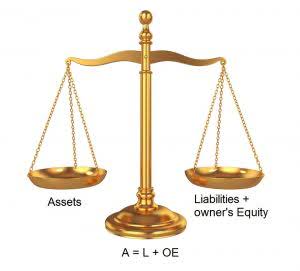
Different assets have different depreciation rates based on their expected lifespan and usage. Tax implications to consider include How to Invoice as a Freelancer capital gains tax, depreciation recapture, and any tax incentives or exemptions related to the asset. By understanding and tracking usage patterns, businesses can make more informed decisions about asset maintenance, replacement, and disposal, ultimately helping to maximize salvage value. Historical data on asset values, depreciation trends, and market conditions can inform salvage value estimates.
Tax Rate
The difference between the initial purchase price and the amount it sold for balance sheet is the salvage value. A tax rate of 30% is applicable to both income and gains and is not expected to change in 5 years. Tax code requires the company to depreciate the plant over 5 years with $10 million salvage value.

Tips for Effective After-Tax Salvage Value Calculation
Depreciation is added back to net income when calculating cash flow from operations. A lower depreciation expense, resulting from a higher salvage value, can reduce cash flow from operations. Salvage value affects depreciation, a non-cash expense that influences net income on the income statement.

Historical Data & Benchmarks
- The IRS allows businesses to use the Accelerated Cost Recovery System (ACRS) or Modified Accelerated Cost Recovery System (MACRS) methods to determine the amount to be depreciated.
- It’s essential to consider the life cycle of an asset when deciding whether to ignore depreciation in business computing.
- Some tax jurisdictions may allow the carryforward of tax liabilities to future years, minimizing the immediate impact on salvage value after tax.
- You’re faced with the decision of whether to sell it or keep it until it becomes obsolete.
- The matching principle can be considered to be a rule in accounting that says if you’re making money from something, you should also recognize the cost of that thing during the same period.
- This comprehensive approach ensures effective financial management and optimized resource allocation.
If the residual value assumption is set as zero, then the depreciation expense each year will be higher, and the tax benefits from depreciation will be fully maximized. When considering the disposal of an asset, calculating the salvage value after tax is an important step. Salvage value refers to the residual worth of the asset after its useful life is complete, and understanding its after-tax value is crucial for financial planning and decision-making.


The after tax salvage value online calculator provides us the after-tax value of the salvage of the asset. The impact of the salvage (residual) value assumption on the annual depreciation of the asset is as follows. The carrying value of the asset is then reduced by depreciation each year during the useful life assumption. Business equipment classified under Section 1231 may have different tax treatments, blending capital and ordinary income rules. To estimate salvage value, a company can use the percentage of the original cost method or get an independent appraisal. The percentage of cost method multiplies the original cost by the salvage value percentage.
- Calculating salvage value is a crucial step in determining the worth of business and personal assets.
- This carrying value serves as an essential indicator of an asset’s remaining value on the company’s balance sheet.
- Net cash flows are different from net income because some expenses are non-cash such as depreciation, etc.
- Different assets have different depreciation rates based on their expected lifespan and usage.
- It’s essential to keep accurate records of the asset’s depreciation and salvage value to ensure you’re taking advantage of the correct tax deductions.
If we imagine that this value would be nil, there would be no chance of any reduction in depreciation. That’s why it’s wiser to go for zero value while applying depreciation on the asset. Now, you are ready to record a depreciation journal after tax salvage value entry towards the end of the accounting period. We can see this example to calculate salvage value and record depreciation in accounts.
Power to Weight Ratio Calculator Vehicle Performance
Some tax jurisdictions may allow the carryforward of tax liabilities to future years, minimizing the immediate impact on salvage value after tax. The tax rate to use depends on the specific tax laws and regulations of your jurisdiction. In some cases, after deducting the tax liability, the salvage value after tax can be negative, indicating that the disposal of the asset may result in a loss.
